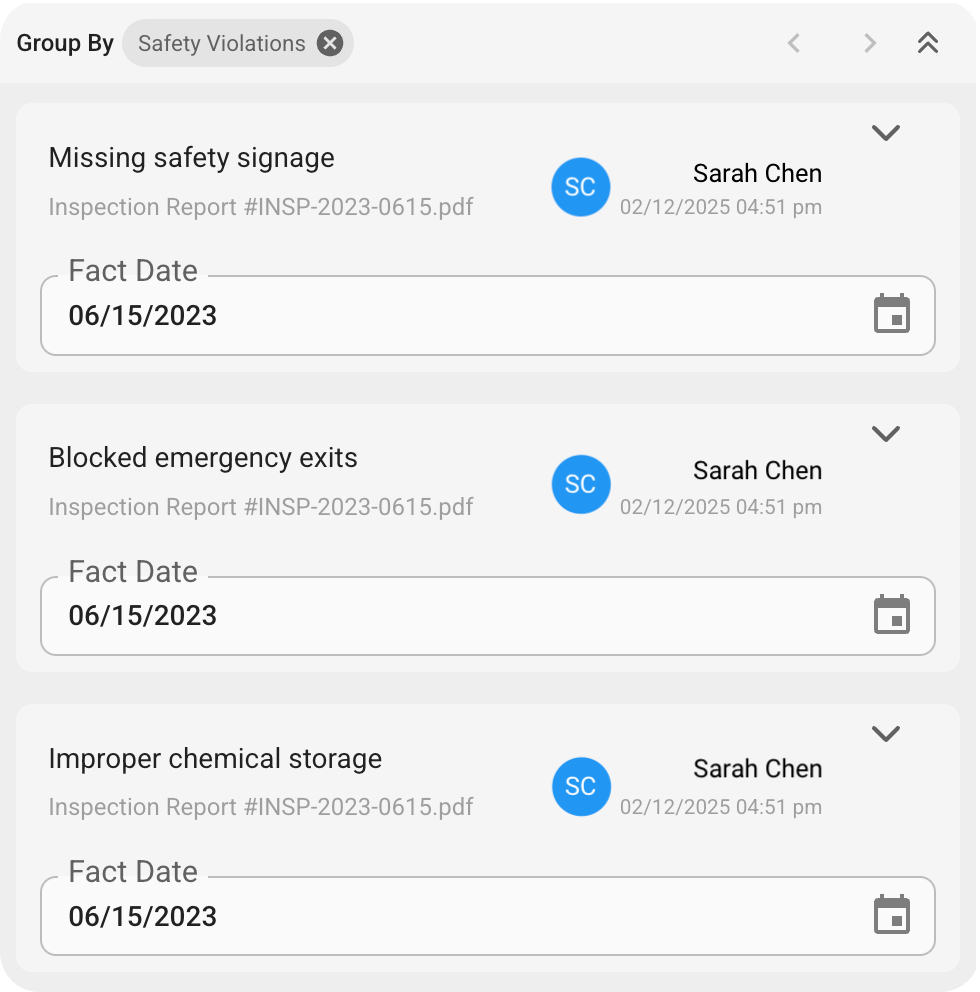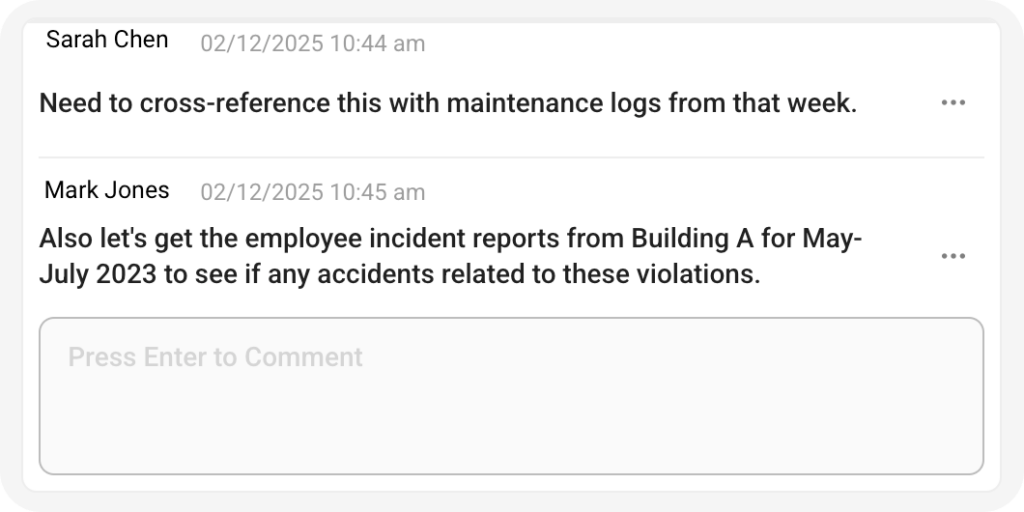Using Facts to Build Legal Chronology
Crafting a clear and compelling narrative is a cornerstone of any legal case. And doing so requires a solid chronology. By focusing on facts, not just documents, legal teams can uncover gaps, highlight key events, and build a stronger case. Discover practical tips to create a timeline that drives your case forward.

The difference between a winning legal case and a losing one? Often, it simply comes down to how effectively the story is presented. A tightly written, chronological case timeline can make all the difference, giving you an orderly framework of key case events and highlighting areas that need further development.
Of course, constructing legal chronologies takes more than the simple recitation of events and dates. If it’s fact-based, chronologies can even reveal evidence gaps and identify inconsistencies. A fact-based timeline is essential for truly understanding the case itself.
Why Start with the Facts?
Facts are the cornerstone of any sound legal timeline. They provide form to the story of the case, and they concentrate the evidence on the most important details. Fact-based timelines are also adaptable. New case evidence that surfaces can be incorporated into facts, and this keeps your legal timeline up-to-date.
Relying on document dates alone can be misleading. An email referencing a meeting or a report summarizing events that transpired months before is not necessarily an indication of when they happened. Starting from facts—rather than documents—anchors the timeline in what happened, not when someone wrote it down.
Building a Timeline That Works
Here are practical tips for building an effective fact-based timeline:
1. Focus on What Needs to Be Proven
A great timeline covers the facts that support or disprove the case’s main arguments directly. Not all details are equally important. Prioritize the facts that move the case forward.
2. Link Facts to Supporting Evidence
Documents, statements from witnesses, and other facts are essential for confirming your facts. Linking facts to supporting documents links times directly where needed.
3. Group Related Information Together
Some facts are part of an overall picture. A series of safety violations, for example, might include a series of small events. Under one header, grouping these keeps your timeline clean and easy to follow.
4. Follow-up on Unanswered Questions
Gaps in your timeline are just as telling as the facts you have. Missing pieces could point to missing evidence, an opportunity to challenge the other party, or a new angle to explore.


The Benefits of a Fact-Based Approach
Having a case timeline based-on facts, and not just documents, paints a clearer picture of your case. It brings out areas of dispute, points out your strongest arguments, and prepares you for potential challenges. Most importantly, it keeps your case rooted in what really happened, therefore providing you with a solid argument.
The Role of Technology in Fact Management
Handling facts efficiently requires more than traditional methods. While most legal professionals recognize the value of timelines, manually creating and revising them can be time-consuming and error-prone. Fact management tools offer a solution, simplifying the process of organizing and analyzing data.
Document review technology like Fact Link makes the case preparation process more efficient so that teams can collaborate on creating and maintaining timelines linking directly to supporting documentation. With a focus on fact management, legal teams will spend less time wading through mounds of documents looking for evidence and more time crafting a winning case.
Creating a Stronger Case
Building a strong legal case timeline is a process of building a narrative that connects the dots, emphasizes what’s important, and uncovers what’s missing. By remaining focused on the facts, you can build a stronger case from the ground up.
